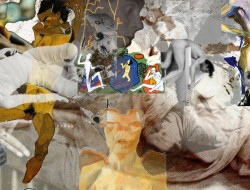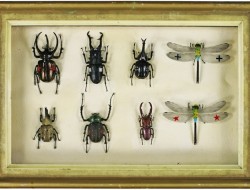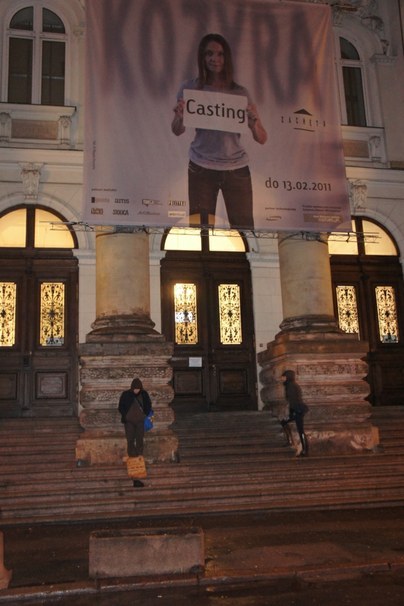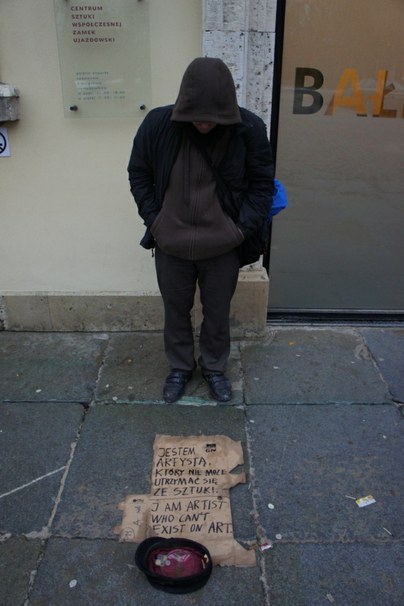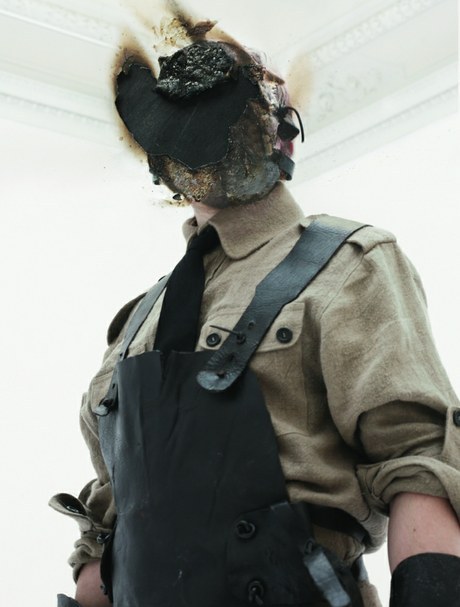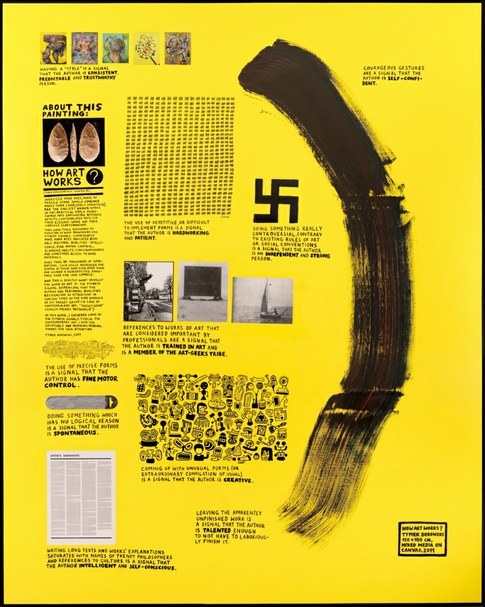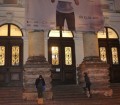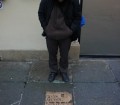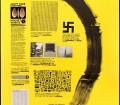27.09.2013 – 29.12.2013
Artists: Ewa Axelrad, Tymek Borowski, Izabela Chamczyk, Mateusz Kula, Jan Manski, Arek Pasożyt, Liliana Piskorska, Joachim Sługocki, Izabela Tarasewicz, Natalia Wiśniewska
Curator: Piotr Lisowski
I’d like to tell you… about the film titled “Epidemic”. Or actually, to explain its ending. The protagonist Messmer spreads plague as he travels. Finally, he hides in an underground cave to escape the disease… When everyone else is dead, he stays in the cave to avoid becoming infected… and then he realizes that it is him who carries the disease…
Lars von Trier, Epidemic, 1987
The title and the form of the Epidemic exhibition refer to Lars von Trier’s Epidemic (1987), a film from theEuropa Trilogy by the Danish director. Combines documentary and fictional elements, the film constitutes an attempt at presenting the process of working on a script. Quasi-documentary scenes showing von Trier and screenwriter Niels Vørsel trying to reconstruct a lost screenplay are interwoven with fictional ones telling the story of an epidemic. In the culminating scene, the filmmakers meet the producer and a séance is staged. A woman who has read the lost screenplay “enters” the film and begins to describe the images of the epidemic she can see and the disease is transmitted to the people present in the meeting as a consequence…
Autothematic reflection on the film introduced by von Trier provides the starting point for the Epidemicexhibition, which is – first and foremost – an attempt to test the idea of an art exhibition as a medium. It examines contemporary categories of artistic production in the context of relations between artists, curators, audiences and institutions. Its structure refers to the category of the essay film (Chris Marker), where different narrations and methods of representation occur at the same level and the boundaries between fiction and reality blur.
In an autothematic fashion, the Epidemic exhibition attempts to explore the phenomenon of the idea of an art exhibition, uncovering, to some extent, the record of its preparations and eliminating the borderline between what is finished and what is in progress, exposing its mechanisms at the various stages of conception development, references, production or arrangement. At the same time, it provides a pretext for constructing an independent story, related by participating artists. By creating a “proper script of narration”, the exposition offers space for the negotiation of attitudes that consider the epidemic not as punishment but as an inseparable part of human nature. Within a system that does not allow mistakes, being hygienically perfect and subjected to permanent quarantine, bringing up questions about anxiety, disability, immaturity or fragility borders on the impermissible, accompanied by the hope, like in the case of the protagonists in von Trier’s film, that a chance meeting will take place and give rise to the “temptation to draw logical, even though unjustified, conclusions”.
Script fragment from the culminating scene in the film Epidemic
“- You can only hear what I am directly telling you. You’re asleep. You’ve fallen into deep sleep. You’re dreaming. Now listen, I’ll tell you something. Listen carefully to me. You’ve read the script. Enter the film “Epidemic”, enter it.
– I’m walking down a street.
– What do you see?
– People… They look horrible… They are screaming… Screaming wildly. Something… They are screaming something.
– What do you hear?
– They are calling… God, I guess. They are calling for help. They are afraid. I also see rats… Rats with long tails. The tails are longer than they are. Everyone’s alone. Nobody’s talking. People are afraid of people, they are afraid of becoming infected. They are afraid of death. They’re suffering so badly, and I’m suffering too. On some houses… there are big crosses… That’s where the disease is. There may be dead people there as well.
– Go into the house!
– His entire body is covered with ulcers. He’s lying there and looking straight ahead. Children are starting to cry. They are horribly afraid.
– Are there other sick people in the house?
– The man is getting up… he’s starting to undress some of the children. They look horrible. They are all black. There are people, sick people in the opposite house as well. A car is drawing near. It’s stopped. They are throwing out people. 20, 30 another 10 people. I can’t count them all. There are holes everywhere, with lots of children in them… people. They are dying in the streets. There are people lying everywhere, everyone’s dying… We are falling. Falling.
– How come?
– Calm down! Leave the film! Leave it! Leave the film!…”
 The Institution is funded from the budget of Toruń Municipality
The Institution is funded from the budget of Toruń Municipality
